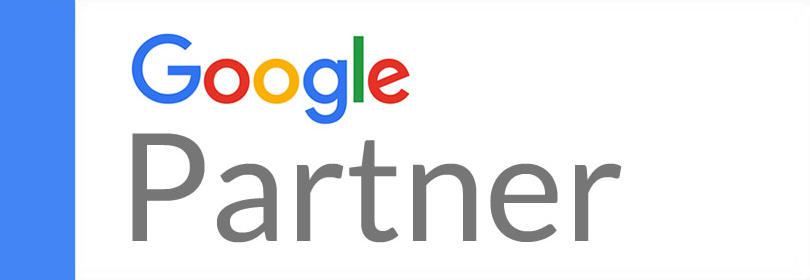The Case For Content Personalization And Brand Alignment
- By Nate Meadows
- •
- 07 Jan, 2019
- •
Personalization will create the momentum.

It shouldn't be a surprise that nearly 50% of US consumers recently surveyed said they won’t spend time with branded content if it’s not relevant to their interests. Here are two more stats for you… 88% of consumers say that personally relevant content improves how they feel about a brand. And 78% say that personally relevant content increases their purchase intent for a brand’s products and services. What this means is marketing professionals cannot afford to ignore the importance of investing in hyper-personalized content marketing.
If you are spending the majority of your marketing budgets on campaigns with promotional messages, and not on creating hyper-relevant content focused on experiences, you are missing out on an opportunity for your content to not only get the visibility it deserves but also the opportunity to convert.
Regardless if you sell direct to consumer, wholesale, or through distribution channels, getting your branded content marketing strategy aligned with your specific audiences is critical. Here’s the scary part… a recent survey of marketing professionals revealed that only 38% of companies had a content marketing strategy. Now let’s dive into an overview on how you can get your content marketing generating powerful results.
AUDIENCE FIRST, BRAND SECOND.
All content, messaging etc. should be aligned to your brand. Your brand is what everything is built off of… but it’s important to make a critical distinction that few brands do right. Content Marketing is not an opportunity for your brand to be narcissistic.
For any content marketing strategy to work it must include the following six elements:
Quality content
Audience Focused (Relevant)
Informative/Educational
On the right channel
Not too much or too little -- just the right amount of content
Aesthetic - No one wants to look at ugly content
QUALITY
Spray and pray content marketing methods don’t work… meaning, garbage content that is clickbait, poorly written, and “mass” produced (content written to appeal to everyone) will only damage your brand, not help it.
As marketers should expect, customers have grown accustomed to personalized digital experiences. Largely in part to the companies they do business with. Yet, there’s only a handful that are really doing it well. Companies like Amazon use their discrete social media marketing strategy and AI to pull consumers back into the funnel with hyper-personalized content - which has a strong user-generated component to it.
The unintended consequences of innovations like Netflix, Amazon, and others trickles down to marketers across industries, sizes and sophistications to provide a similarly hyper-personalized experience. In other words, if you’re a B2B Industrial Automation company selling to wholesalers, guess what - they want the same personalized experience.
RELEVANT
We know the majority of consumers are less interested in a brand’s products or services if the brand offers content that’s not personally relevant. In fact, most consumers don’t read more than the headline if the content is not immediately relevant to them. Remember that statistic in the opening paragraph - 88% percent of consumers say that personally relevant branded content positively influences how they feel about the brand.
The concept of content segmentation to increase its relevance is, again, true across all industries and businesses. If you’re not already selling to a hyper-focused niche audience, then consider this... If you calculate the return on investment (ROI) on non-personalized content marketing and then quantify the impact the content is or is not having in your business you’ll immediately notice a large amount of direct and indirect waste. Wasted time, energy, effort, salaries… the list goes on. Shockingly, 72% of consumers say that when a brand does a great job of delivering personally relevant content, they see the brand itself as relevant. That’s a nice lift…
Curious how to know your audience and what matters most to them? Start here. In this blog post we discuss how audiences are not static... they change and your understanding of these changes are critical to a successful social media and broader marketing strategy.
“First and foremost, if your brand already has an online presence you're in good shape. Understanding your audience should start by analyzing your web traffic on Google Analytics.
Google Analytics allows you to better understand your existing audience composition in terms of gender, age, and interests. This allows you to understand the kinds of creative content you need to develop, the kinds of media buys you should make, and the kinds of audiences you need to develop for marketing and remarketing campaigns. This happens through Google's Affinity Audiences... Affinity targeting analyzes someone’s overall interests, passions, and lifestyle to get a better sense of their overall identity.”
EDUCATE AND INFORM
Research confirms consumers place the highest value on content that informs and educates them. Over 70% of your content marketing should fall into this category. Yeah, that means your self-promoting content should take a backseat. Moreover, consumers place greater value on content that enriches the brain versus just stimulating it.
While that squirrel video eating an eggroll in NYC might have 1.4 million views, it’s a not comparable to content marketing -- That goes to you, executive big shot, asking why your post on thermal coupling doesn’t have 5 billion views. You see, content that enriches the brain stimulates the cognitive functions of the individual engaging with it - thus helping position the brand with authority. Creating a “How-To” video while incorporating your brand into the mix informs, and positions your brand as the source to solve the dilemma - even if that dilemma is how to braid your daughters hair.
Previously, I mentioned in the “how to utilize content marketing” blog - When you provide high quality, relevant and valuable content, you inform and provide value. Content should inform your audience. It should express a perspective or opinion that elicits an emotion tied back to your brand.
To do this right, start with quantifiably understanding the audience segment you want to inform. As an example, we've compiled some questions for you to think through when working to understand how to develop your content audience strategy:
What are the psychographics and demographics of the group?
What are their daily pressures?
What keeps them awake at night?
Why do they or why would they do business with us?
What are the decision points? And why?
RIGHT CHANNEL
Not all channels are created equal… you might have heard this before, but it’s true. Part of knowing your audience means knowing where they spend their time online… consuming content. Which devices--mobile or desktop? The rabbit hole is endless. However, knowing the core aspects is always a good place to start.
While you may have mixed feelings about a certain channel, or belief that one social platform is better than another, we can all agree on one thing. The best place to reach your audience on social (as an example) is... it depends. It depends on who your audience is. While Facebook may not be the right primary channel for our audience, it may be for yours.
From a recent survey of 1,500 consumers, they were asked to choose the top three channels where they come across branded content. 50% of respondents cited Facebook, with a significant margin over the other sources. Email and online search were cited by 29% each, with YouTube following closely behind at 26%. Advertising and advertorial/native placements earn 21% and 20% respectively, followed by a long tail of less frequently cited sources. These numbers change dramatically when you start accounting for different audience segments, like millennials.
No matter who your audience is, the important thing is to be where they are and share personalized content with them where they expect to see it.
NOT TOO MUCH… OR TOO LITTLE.
How much is enough? Determining the length of your content can seem a little subjective; however, there is research that sheds light on this topic. Steve Rayson
and the cool kids at Buzzsumo
recently published an interesting article
on this very topic.
“There has been much debate about the length of content and what performs well in terms of SEO, engagement and social sharing. Readers want short, snappy content, ideally under 140 characters or at most a list, right? Well, actually, wrong. The evidence of 7 recent studies is that long form content is alive, thriving and driving high levels of content performance.”
SERPIQ undertook an analysis of the top 10 search results for over than 20,000 keywords. They found that the length of content had a direct correlation to the ranking or position in the search results.
Short story - if you want your personalized, relevant, quality content to show up on the right channel, it needs to have an authoritative word count over 2400 characters -- Which also needs to look good.
AESTHETIC
We humans are naturally wired to be drawn to things that we find attractive. People, cars, burritos, etc. Albeit, taste is relative, there are still strong design elements to consider when creating your content. Colors, graphics and photography all play a role in creating the notion of appeal. Put it like this… Over the next few days, take consensus about what articles you read. Document, why you read them. Was it the image that drew you in? Or the copy headline? Likewise, document the articles you skipped - at first glance, why did you skip them?
Undoubtedly, you’ll begin to notice a reoccuring theme.
More times than not, marketers let their own personal biases formulate a dogmatic view of what the “creative” should look like or be. Data and art play a role here. Take in consideration the perspective of Gregory Ciotti, a writer at Entrepreneur magazine:
“...but the truth of the matter is that color is too dependent on personal experiences to be universally translated to specific feelings. But there are broader messaging patterns to be found in color perceptions. For instance, colors play a fairly substantial role in purchases and branding.”
HOW WELL DO YOU KNOW WHAT RESONATES WITH YOUR AUDIENCE?
Get a complimentary consultation from our digital marketing team and get your content on the right track.
+1-937-701-0187hello@digitalradar.agencyOhioArizona
All Rights Reserved | Digital Radar Marketing LLC.



